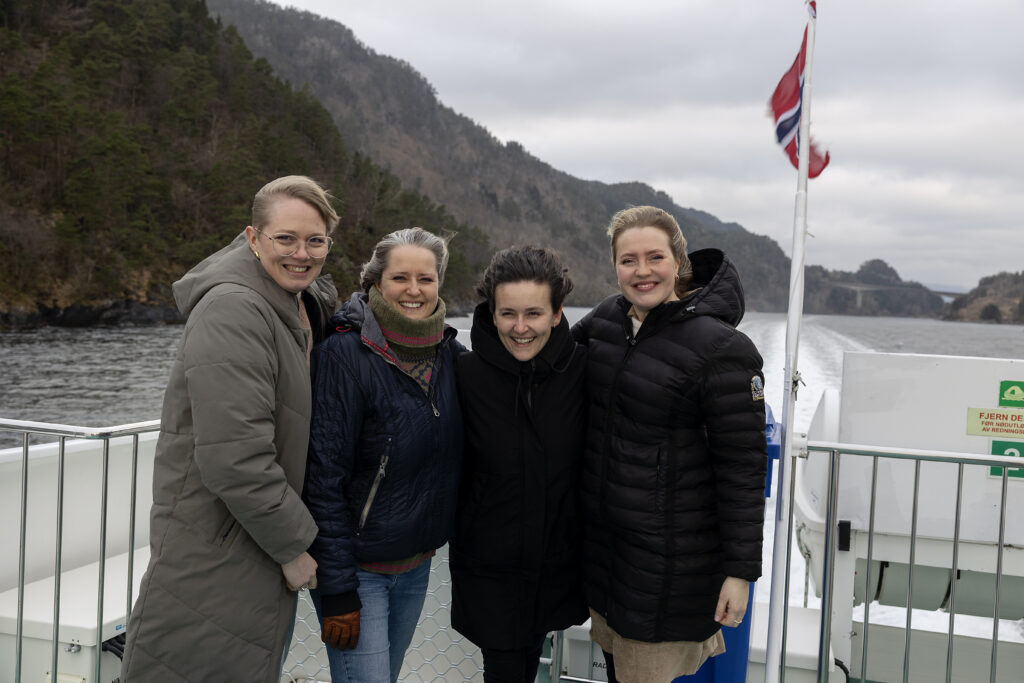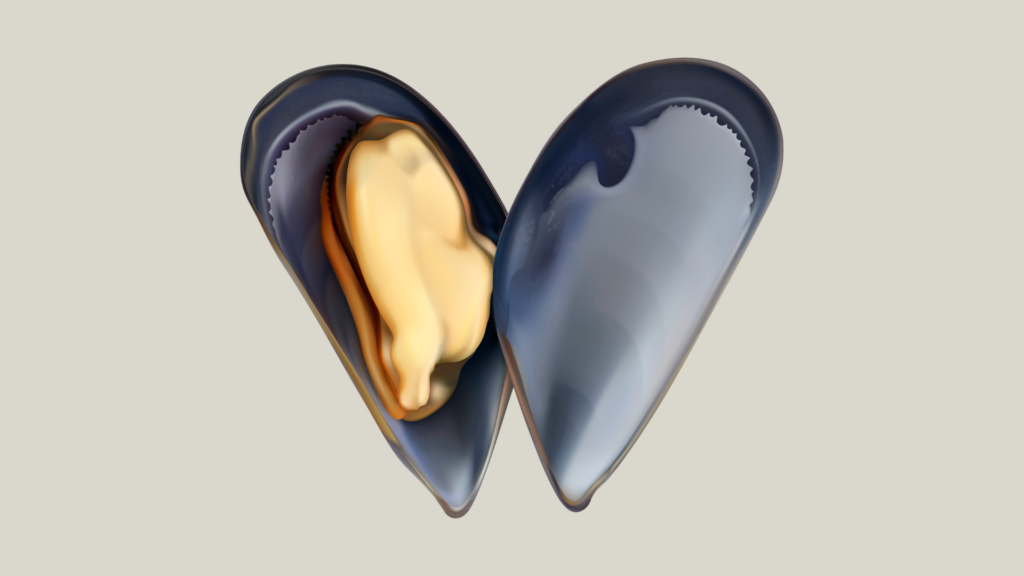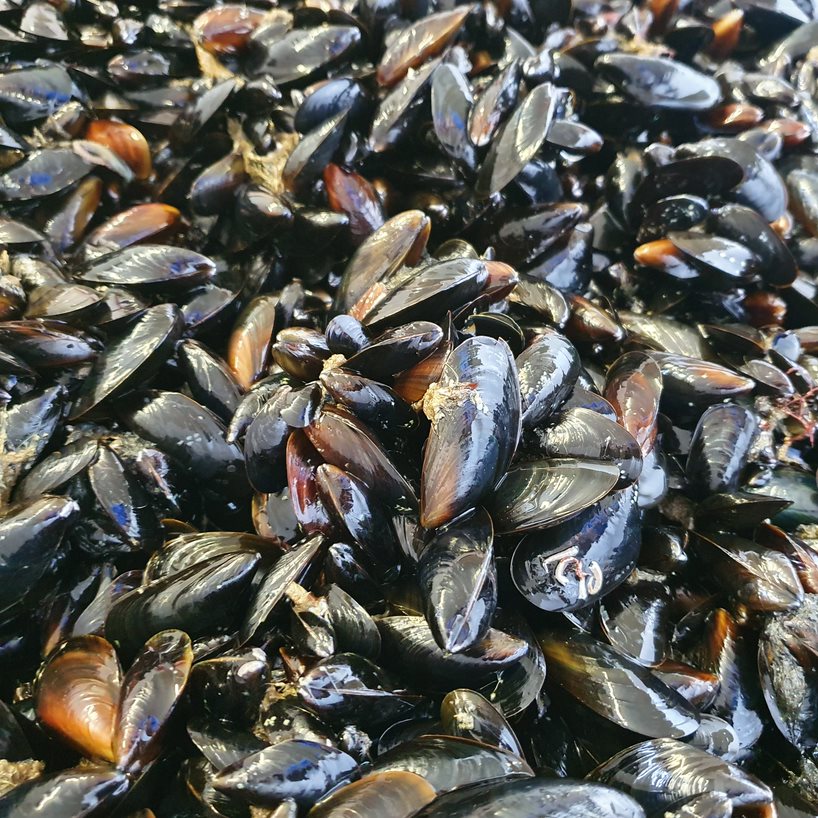In the next years, a group of actors from blue and green industries aims to test whether blue mussels are suitable as ingredients in chicken feed.
To make this happen, several obstacles must be overcome. They must find effective methods to process the hard shells and succeed in mussel cultivation. Additionally, it must be profitable and sustainable. The ultimate reward is increased self-sufficiency in food production in Norway.
Mussel cultivation
Challenges with profitability have characterized attempts to establish an industry of mussel cultivation in Norway. The industry is still under development, and several challenges need to be addressed.
In 2019, 2100 tonnes of blue mussel were cultivated in Norway and 1,5-2 million tonnes is cultivated in the world yearly. One third of the global amount stems from Europe.
Despite somewhat tough start, the potential for Norwegian mussel cultivation is significant, and several projects are testing how the blue shells can be used as a feed ingredient.
An ingredient in chicken feed
BlueMusselFeed will evaluate protein and shells from blue mussels as a possible ingredient in chicken feed. The mussels have the potential to replace imported products such as soy and corn gluten if they are shown to be equally effective as the current ingredients. In addition, the shells can be used in place of limestone meal as a calcium source.

Working on mussel processing
Ocean Forest AS is one of the partners in the project, and initially, they will be working on blue mussel processing. Later, they will be involved in optimizing and scaling up of the technology related to cultivation.
Anne Sophie Gerhardt, the project coordinator at Ocean Forest AS, explains how they proceed to transform whole blue mussels into raw material that can be used in feed.
When processing mussels, the soft and hard part must be separated – in other words, they must be crushed. Next, protein liquid is separated from the shell parts and the water content is reduced. Eventually, they obtain a mussel mass, which is then preserved with acid to create a liquid mass/silage, she explains.
– In addition, we extract the shell fraction, which is made durable by drying it.
Innovation processes are challenging
The result of the process is raw material from blue mussels that can be used in feed, and in this case, as ingredients in chicken feed. However, innovation always meets some challenges.
– Currently, mussel processing is under development. This fall, when attempting to scale up the technology we have developed earlier, we encountered some technical difficulties.
She cannot disclose the technology they are using, but she points out that it is common for things not to work right away.
– When transitioning from a prototype to large-scale, there are often obstacles to overcome.
For instance, Gerhardt explains that the durability of mussels presents some challenges. To keep the mussels from going bad, all equipment must function without extended stops.
– This timeframe is very limited, and this has been challenging.
Potential to replace imported raw materials
Currently, Ocean Forest AS uses mussels from Denmark in the development, but later, they hope that blue mussel from Norway can be used in the future. As of now, the production in Norway is too small, and the mussels are too expensive. This could create an entirely new industry in Norway and contribute to improving our self-sufficiency when it comes to food production.
Facts about the project
BlueMusselFeed has a total budget of 24,7 million. Funding from The Research Council of Norway council constitutes 11,7 million.
The participants in the project are Fiskå Mølle, Ocean Forest AS, Eide Fjordbruk, Norforsk, Animalia, Nortura and Land meets ocean (owned by NCE Seafood Innovation, NCE Blue Legasea, Biotech North and NCE Heidner Biocluster).
Read more about the project here:

The dark blue shells are almost glued together before taking on a butterfly-like shape when broken apart by curious hands.
